Impaired memory and thinking, decreased interest in the world around us, changes in behavior that occur in old age are often mistaken for signs of aging.
While the timely detected symptoms of dementia in the elderly allow for the early management of the disease, with optimization of mental ability and physical health.
Material Content:
What is dementia in older people?
With age, people's habits and character change, and not always for the better. Finding out the difference between a natural change in attitude towards life and the first manifestations of diseases of the nervous system can be difficult. Personality syndrome continues to develop, dementia progresses.
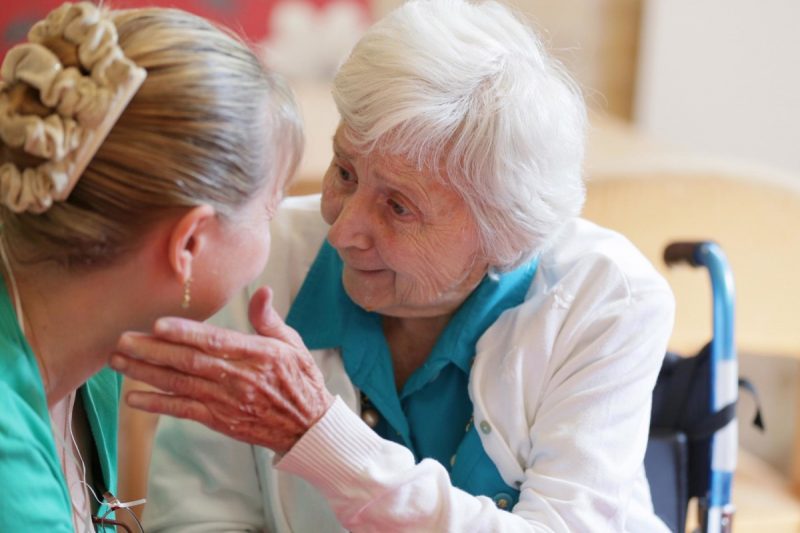
What it is, it’s easy to understand - in Latin, dementia means “dementia”. In most cases, the diagnosis of “senile dementia” sounds like a sentence, because at the time of going to the doctor the course of the disease went too far.
And since the disease develops against the background of the destruction of brain cells, this process is irreversible, and it is not possible to cure dementia.
In medicine, dementia is usually called acquired dementia syndrome, which manifests itself in a persistent decrease in interest in knowledge against the background of the loss of previously acquired skills and knowledge. Most often, pathology is observed in old age, although it is not considered a natural consequence of aging.
The development of dementia is characterized by a gradual degradation of the mental potential of a person, his ability to think and understand, speak and reason, cognize and create. Sick people are unable to control their emotional state and behavior in society. The last stage of the disease is the complete disintegration of the patient's personality.
According to WHO, in recent years there has been a tendency to increase the number of patients with dementia. About 8 million new cases of pathology are diagnosed annually, each of which is assigned a disability. It is expected that by 2050 the total number of patients with senile dementia will be about 132 million people.
The causes of the disease
At a young age, dementia is extremely rare, but with the passage of life, the likelihood of its occurrence increases significantly. Most often, senile dementia occurs in people who have had illnesses or injuries that cause damage to brain tissue.
The most powerful provocative factor are Alzheimer's, Parkinson's, Peak’s diseases, as well as the vascular system - heart attacks and strokes.
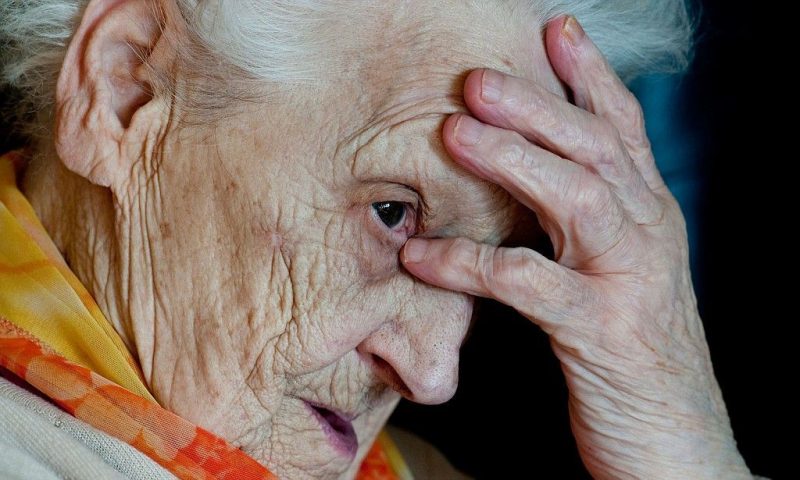
The list of adverse factors contributing to the development of dementia includes:
- immune system dysfunctions;
- genetic predisposition;
- alcoholism;
- meningitis, encephalitis;
- renal or liver failure;
- malignant tumors in the brain;
- diseases of the endocrine and autoimmune systems;
- stress, great nervous and emotional stress.
In some cases, the development of dementia can occur against the background of severe infections, AIDS.
Most often, dementia is diagnosed in patients over the age of 65.
The main signs and symptoms of dementia
Manifestations of the pathology change as it develops. According to the severity of the course, three stages of the disease are distinguished, characterized by certain signs.
Stages of the disease
At an early stage in the development of dementia, its symptoms look inconclusive for suspecting a disease. Most often, the appearance of the first signs of dementia is attributed to overwork.
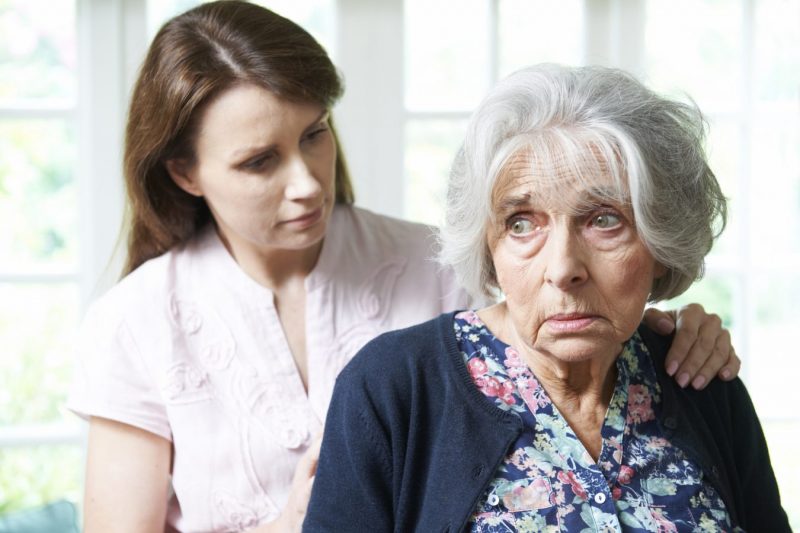
First stage. The disease manifests itself in forgetfulness. As a rule, events that occurred in recent times are “erased” from memory, while older memories are preserved unchanged.
In everyday life, a sick person can behave as usual, and be completely independent. As an alarm, periodic loss of time count or orientation disorder in a familiar area should be considered.
In the character of a sick person, traits that are not characteristic of him before - suspiciousness, pettiness, or grouchy gradually appear.
Despite the fact that the disease cannot be cured, at the first stage its development can be not only slowed down, but also stopped. For this, the people around the patient should be extremely careful and sensitive so as not to miss the impending threat.
Second stage. The progress of dementia is expressed in a decrease in the intellectual abilities of the patient and the ability to critically perceive his condition.
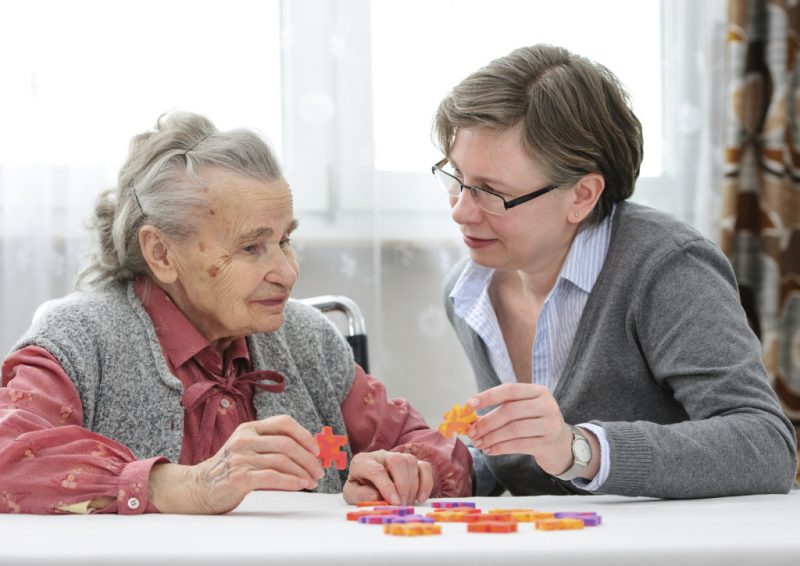
The primary signs of the disease acquire a more pronounced form of manifestation:
- sleep disorder, reduced need for night rest amid uncontrolled falling asleep during the day;
- difficulties in using familiar devices and household appliances - telephone, door lock, washing machine, TV;
- loss of orientation when moving around the rooms of your own housing;
- increased behavioral difficulties, communication problems, frequent repetition of the same questions;
- the attachment of mental disorders, the appearance of false memories, delusions and hallucinations.
A sick person loses the opportunity to independently manage the household and take care of himself.
Third stage. At a late stage in the development of dementia, there is a complete violation of everyday human activities - ignoring hygiene procedures, lack of understanding of colloquial speech, lack of compassion and interest in relatives, an absolute pathology of memory.
A dementia patient ceases to recognize his relatives and may show aggression. Appetite, as a rule, remains at the same level or increases, but, despite this, the patient loses weight and looks exhausted.
With total dementia, the final disintegration of the personality and the development of a vegetative coma are observed, therefore patients need constant care and control.
The main types of disease
Depending on the localization of the affected areas and the presence of concomitant diseases, senile dementia is divided into three main types, each of which includes several types - vascular, atrophic and mixed.
Vascular dementia
As a rule, vascular dementia develops against the background of cerebral arteriosclerosis. As a result of a violation of blood supply, the cortex and subcortical structures are affected.
For various reasons that caused vascular dementia, the nature of the development of the disease may vary. If the disease arose against the background of a stroke, its development is characterized by rapid progress and the vastness of the affected areas, in accordance with the localization of the stroke.
If the cause of the disease is chronic cerebral ischemia, dementia develops slowly and is almost invisible at an early stage. The patient complains of fatigue, weakness and distraction.
Memory loss occurs gradually. Headaches and sleep disturbances are possible. In rare cases, psychoses and hallucinations are possible.
Senile dementia
The name "senile" comes from the Latin senilis and translates as "senile". In people, age-related dementia is called "senile dementia."
There are two main causes of senile dementia - genetic heredity and impaired functionality of the nervous system.
The mechanism of development of senile dementia looks like this:
- a change in the functionality of the hypothalamus leads to disruption of the pituitary gland and causes hormonal imbalance;
- dysfunctions of most organs, as well as the cortex and subcortical structures of the brain occur;
- connections between neurons are lost, many brain cells die;
- brain volume and mass are reduced;
- atrophy of neurons and replacement of nerve processes by connective tissue develops;
- necrotic foci occur.
In women, the development of senile dementia is observed three times more often than in men.
Alzheimer's disease
Alzheimer's disease is considered the most common type of atrophic dementia. It is this type of pathology that accounts for more than 70% of all recorded cases of dementia.
The disease develops against a background of severe atrophy of the cerebral cortex, as well as expansion of the ventricles and furrows.
The course of the disease depends on the location of the lesion sites. If the left hemisphere of the brain is affected, agnosia is diagnosed - impaired perception, if the right - anomie, problems with the selection of words.
A characteristic symptom at an early stage of the onset of the disease is memory impairment. In the last stage, there is a loss of functionality of all organs, total dementia.
Frontotemporal Dementia
A type of dementia in which the frontal and anterior temporal lobes of the brain are affected is called the frontotemporal. As a rule, frontotemporal dementia is accompanied by atrophy of the cortex and subcortical structures and degeneration of motor neurons of the spinal cord.

Characteristic signs of the disease:
- sudden changes in behavior;
- loss of empathy and empathy;
- loss of planning ability;
- problems with speech.
Memory disorders with frontotemporal dementia do not occur immediately and are less pronounced than with other forms of the disease.
Lewy body disease
More than 25% of cases of dementia are observed in dementia with Levy bodies. The mechanism of the development of the disease is similar to the degenerative processes characteristic of Alzheimer's disease.
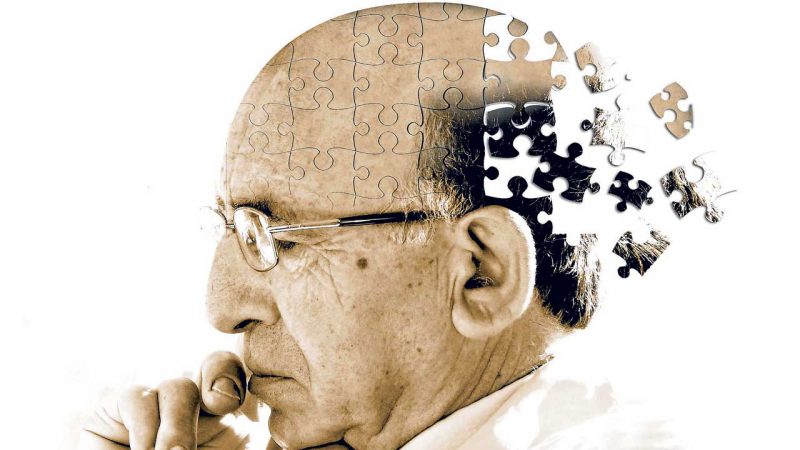
The disease is characterized by the presence inside the neurons of a large number of pathological protein formations - Levy bodies. The main signs are the appearance of visual hallucinations, sudden changes in the level of attention and intelligence against the background of fluctuations in brain functions, and Parkinson's syndrome.
Concomitant symptoms - fainting, delirium, depressive states.
Diagnosis of senile dementia
Due to the individual characteristics of the body of different people, the development of dementia does not always occur the same way. Therefore, doctors diagnose the disease, focusing on the criteria established by the World Health Organization.

The most significant in the diagnosis of dementia is considered a violation of:
- memory;
- thinking, especially abstract;
- ability to plan work and life events;
- visual, auditory and tactile perception (agnosia);
- or lack of speech (aphasia);
- ability to purposeful movements, including acquired skills and any simple actions (apraxia);
- adaptation to the conditions of the social environment.
In addition, the preservation of consciousness is considered a characteristic feature of dementia.
Among the main diagnostic methods are cerebrospinal fluid analysis, MRI, and positron emission tomography.
Disease treatment
The choice of treatment for dementia depends on the type, form and stage of development of the disease. Also of great importance is the patient's age and the presence of concomitant pathologies.
The basis of therapy for dementia is medication with vascular-metabolic drugs and agents that improve the functioning of brain neurons. If necessary, antidepressants are additionally prescribed.

In the presence of pathologies that contribute to the development of dementia, complex therapy is used:
- anticholinesterase drugs with neuroprotective effect;
- drugs that normalize blood pressure;
- medicines to counter ischemia;
- antipsychotics to reduce psychomotor agitation;
- antidepressants, sleeping pills.
As additional means of treatment, music therapy, labor and psychotherapy, cognitive training, gymnastics are used.
According to recent studies, the risk of developing dementia is five times higher in people prone to depression.
Prevention and prognosis of dementia in the elderly
It is impossible to completely stop the progress of dementia. But if you pay attention to the appearance of early symptoms of the disease, you can slow down the course of its development, and increase the period of quality life of the patient.

To avoid the development of dementia, it is necessary to adhere to the following life principles:
- movement is the basis of health. Exercise is the best way to improve brain nutrition;
- bad habits - the main enemy of health. Smoking and alcohol contribute to the development of stroke and psychotic disorders;
- balanced nutrition is the key to vascular health;
- tempering is the best way to strengthen immunity and resist the body's infections;
- brain training is an effective method of maintaining brain health. Reading books, learning languages, traveling, solving crosswords and other types of mental activity allows you to maintain neural connections and prevent or slow down the appearance of degenerative processes.
Even with the most favorable course of the disease, its sad outcome is inevitable. A person with dementia gradually ceases to think, understand, perceive and move. In most cases, dementia peaks within a few years and leads to death.
In the early stages of the disease, patients realize that something is happening to them, but hesitate to admit to others.While the support of relatives and modern medications can significantly alleviate the state of progressive dementia.
Therefore, it is so important to timely detect an incipient pathology and take measures to improve the well-being of a sick person.
Even if there is no way to cure the disease, family people must rid the patient of the worries and try to do everything so that the last stage of his life passes if not happily, then at least calmly.
- Love












